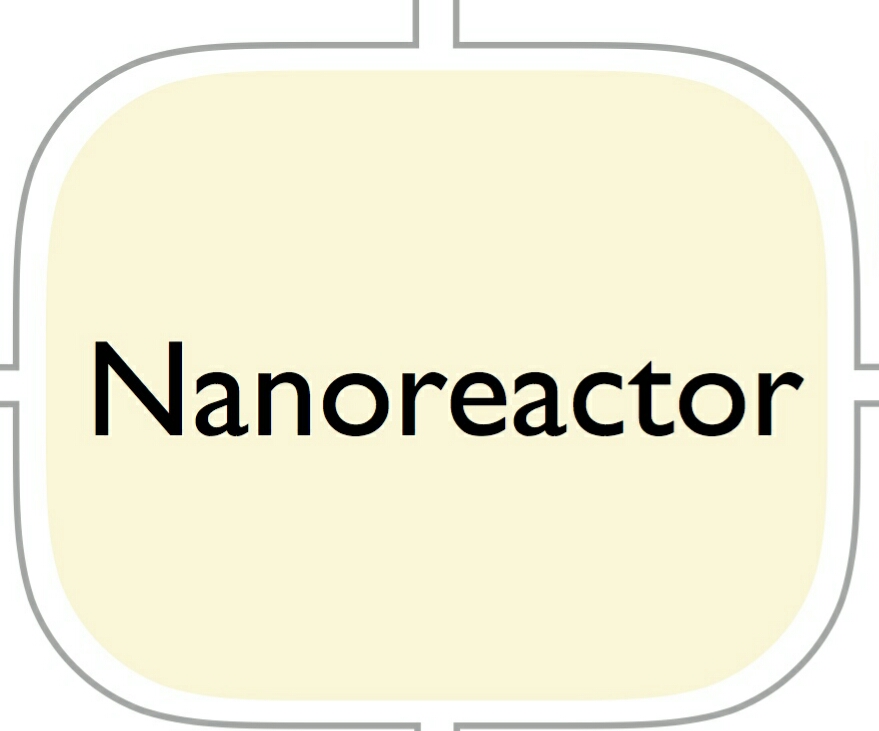Nano-reactors in the catalytic system (structure and types) based on the doctorate of nano-microelectronics
Researcher and author: Dr. ( Afshin Rashid)
Note: Nanoreactors are very diverse. Simple or complex materials, organic and inorganic with electrical conductivity, volume and cavity of tissues are used as nano-reactors. Unlike micro-reactors, the reaction space inside nano-reactors greatly affects the mobility and interactions between the molecules inside it.
Therefore, the nano-reactor is not just a simple holding container and plays an important role in the electrochemical process. Nano-reactors are relatively new materials, but in nature, various processes of nano-reactors have been used for a long time. Performing electrochemical reactions in confined spaces with nanometer dimensions and micrometer volume leads to changes in the kinetics and the whole process path . Such confined spaces used to perform specific electrochemical reactions are called nano-reactors . Nanoreactors are very small nanometer-sized chambers that have great potential for improving electrochemical conversions by protecting catalysts from environmental influences as well as confining reactors and catalysts in a small space for a long time . In fact, nanoreactors are porous materials, one of the dimensions of which is the nanoscale.
One of the catalytic systems is nano-reactors. One of the applications of nano-reactors in electronic conduction are porous materials whose dimensions are less than 011 nm . Numerous simultaneous reactions in the cells of living organisms are based on the same principle. Therefore, various biological and chemical structures that have the characteristics of a nano-reactor are used. Reasons and Benefits of Using Reactors and Nano-Reactors At the macroscopic scale, a chemical chamber reactor makes it possible to perform a reaction in a certain volume. One of the advantages of using a reactor is the possibility of precise control of reaction conditions such as state, temperature and stirring speed. At the micro and nano scales , chambers can also be created that separate a certain volume of reaction mixture from the bulk medium (Medium Bulk). کردن. If a chemical reaction is trapped inside such a chamber, then the chamber is considered a nano-reactor . The advantages of nanoreactors include more control over the reaction, selectivity, separation of porous materials and electronic conductivity of nanomaterials from the bulk medium, followed by reducing the toxicity of the system or increasing the stability of the catalyst and being ideal in electrochemical processes. Noted for their small size. In general, nanostructured materials with specific size, shape and geometry have unique and different properties from bulk materials . Using nanomaterial and micrometer reaction media can be nanomaterials Produce new ones with interesting and remarkable properties. In general, nanoreactors are nanometer-sized chambers in which chemical reactions can take place. Of course, nanoreactors are somehow part of the reaction, and this is their main difference with micro-reactors. One of the useful solutions to achieve the environment of nanoreactors is the use of porous materials, so due to the importance of nanoreactors, porous structures of silicate and zeolite are the most prominent and widely used compounds in this group .
Conclusion :
Nanoreactors are very diverse. Simple or complex materials, organic and inorganic with electrical conductivity, volume and cavity of tissues are used as nano-reactors. Unlike micro-reactors, the reaction space inside nano-reactors greatly affects the mobility and interactions between the molecules inside it.
Researcher and author: Dr. ( Afshin Rashid)
PhD in Nano-Microelectronics




